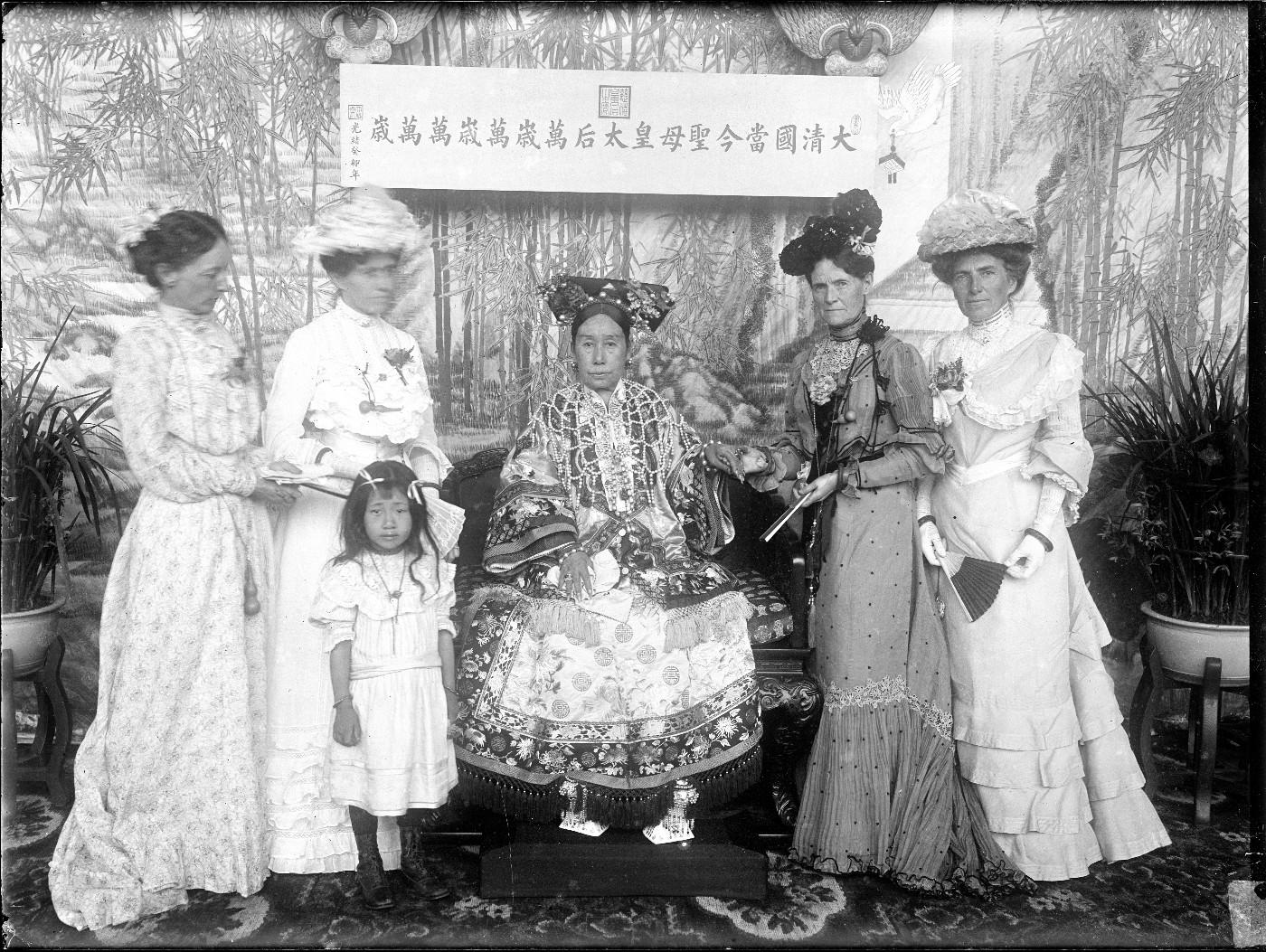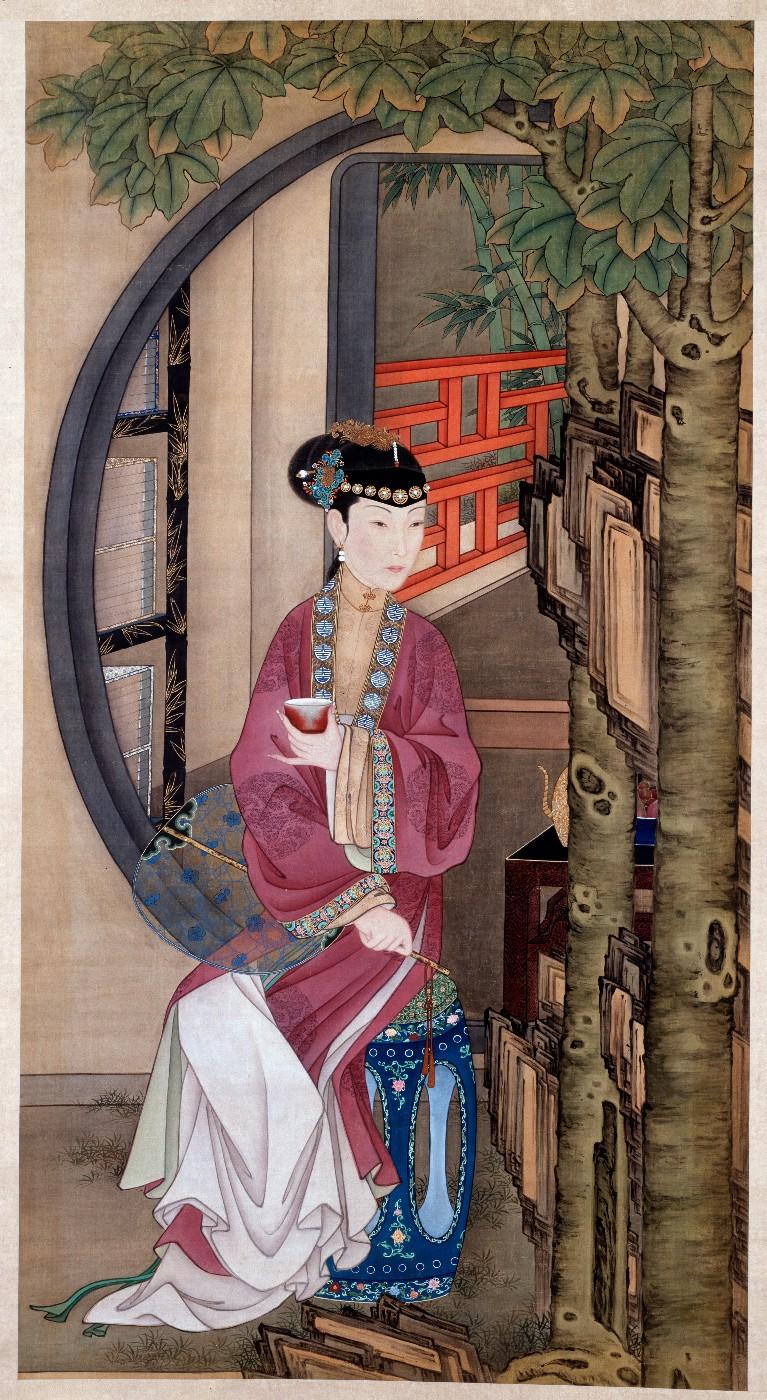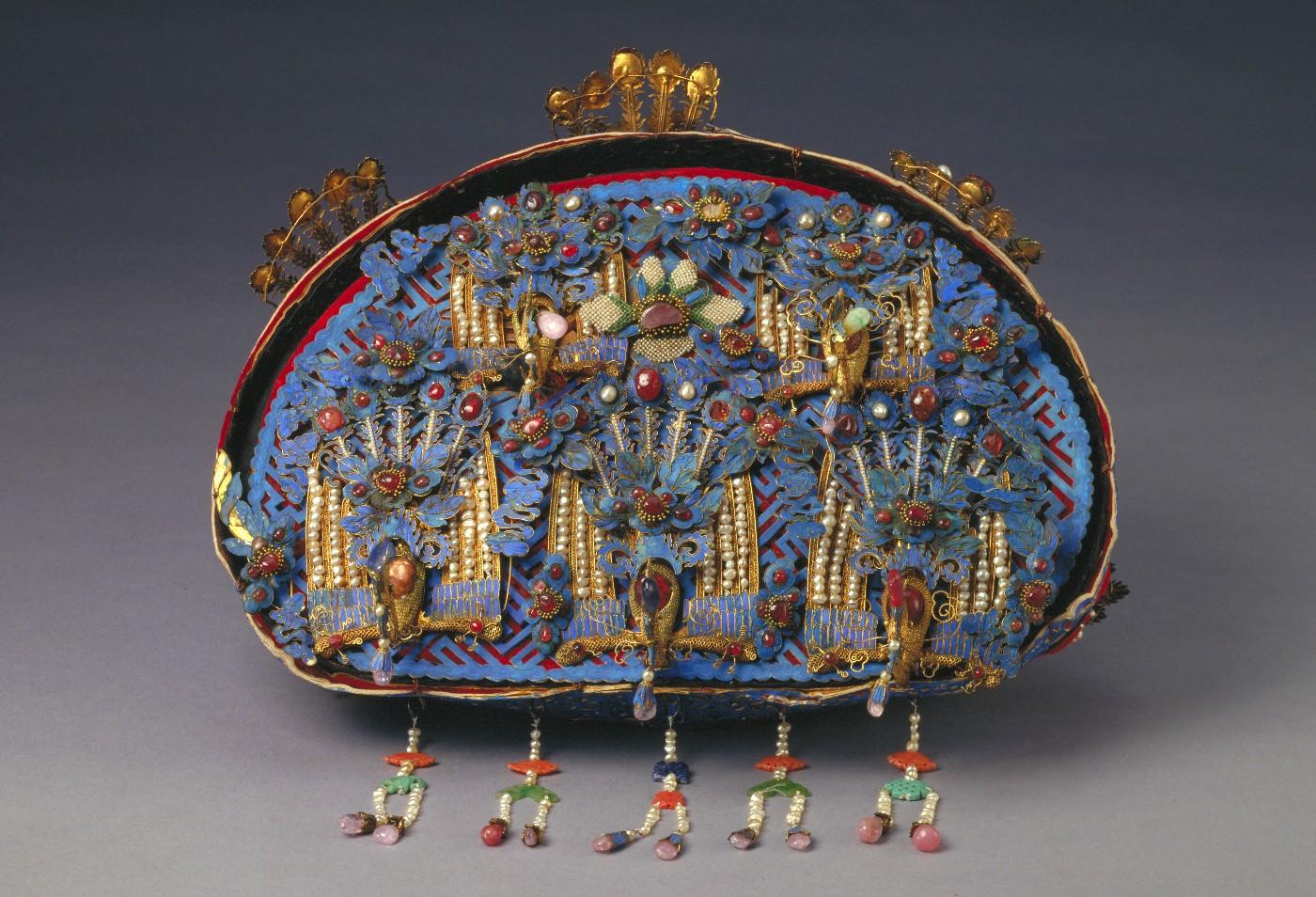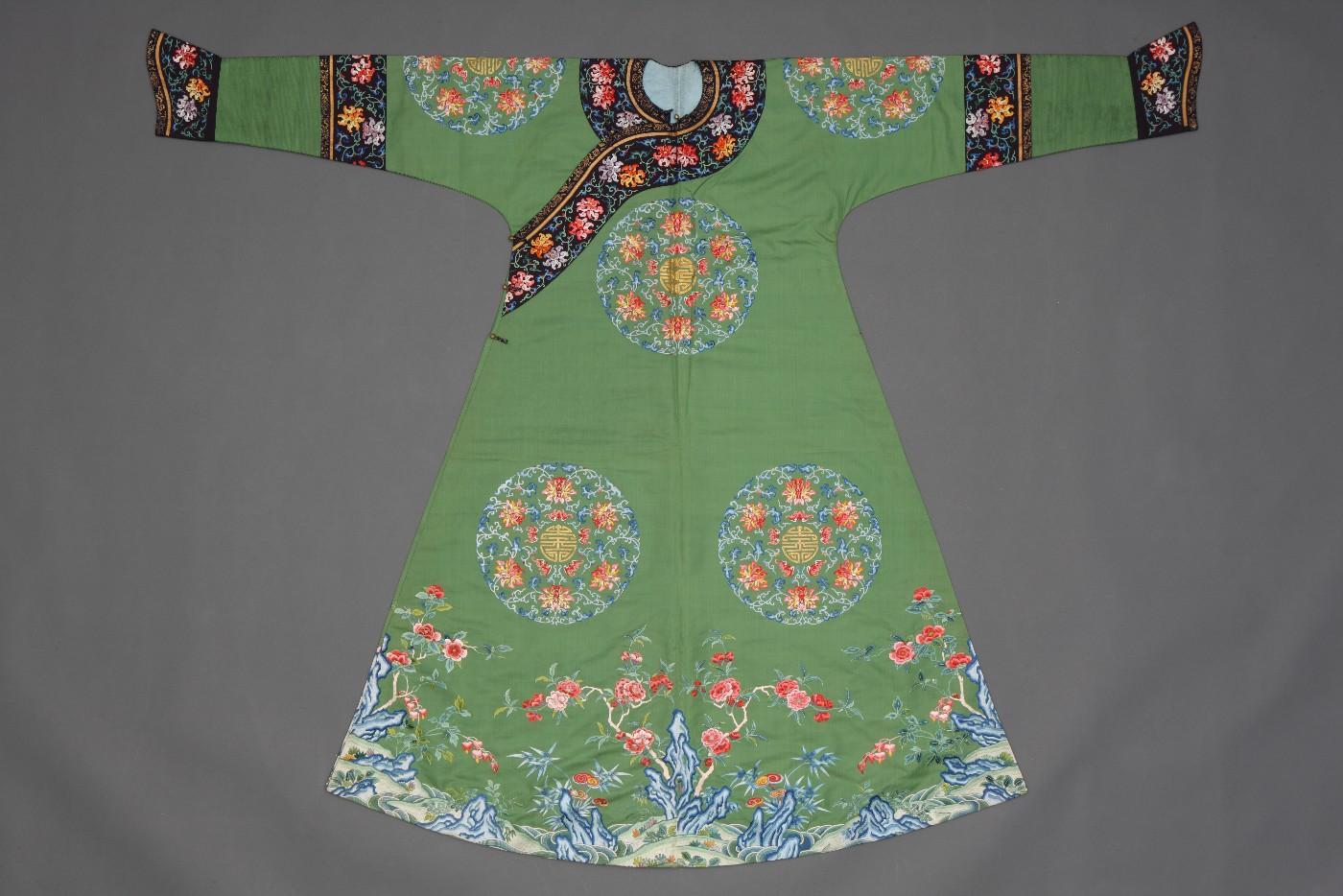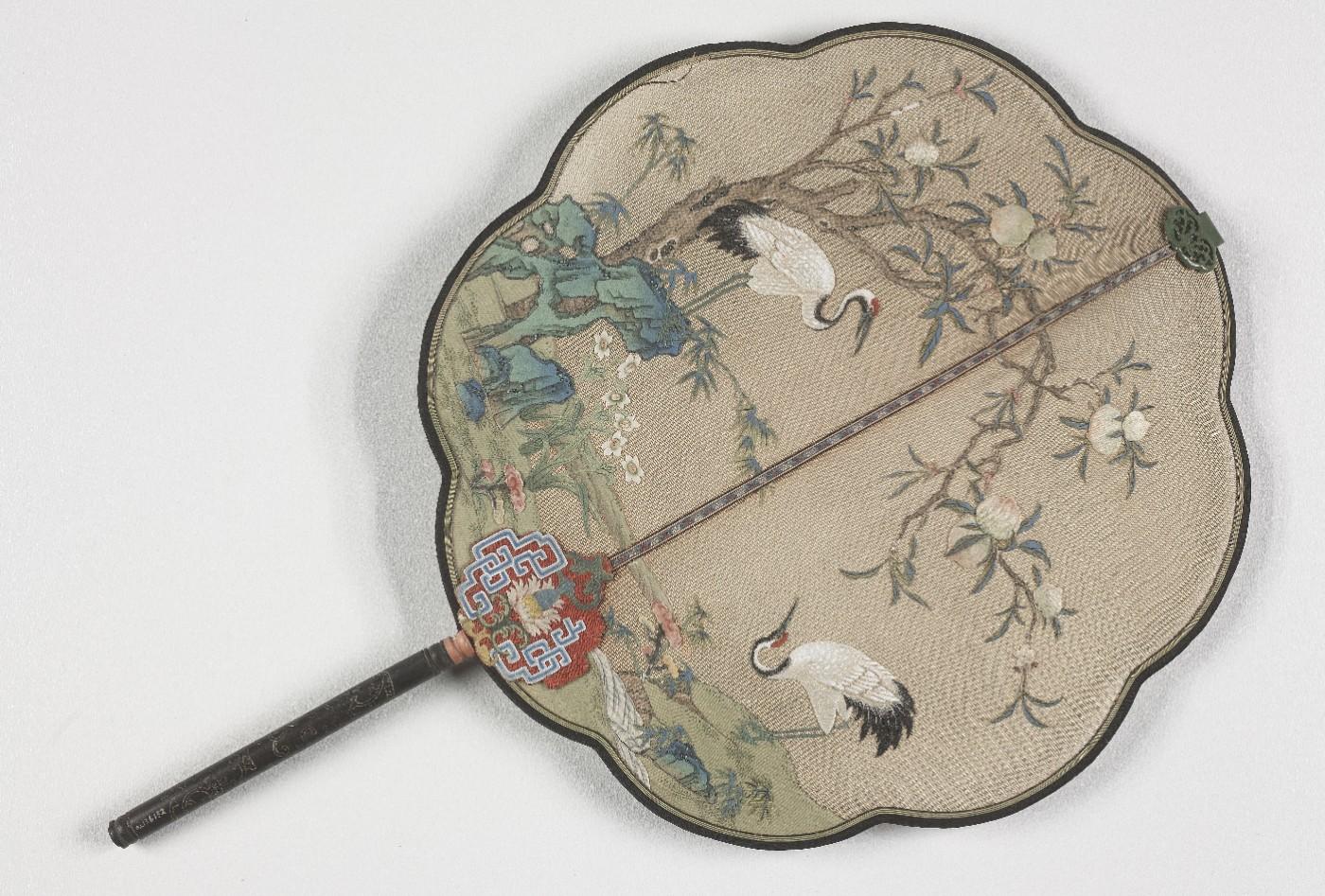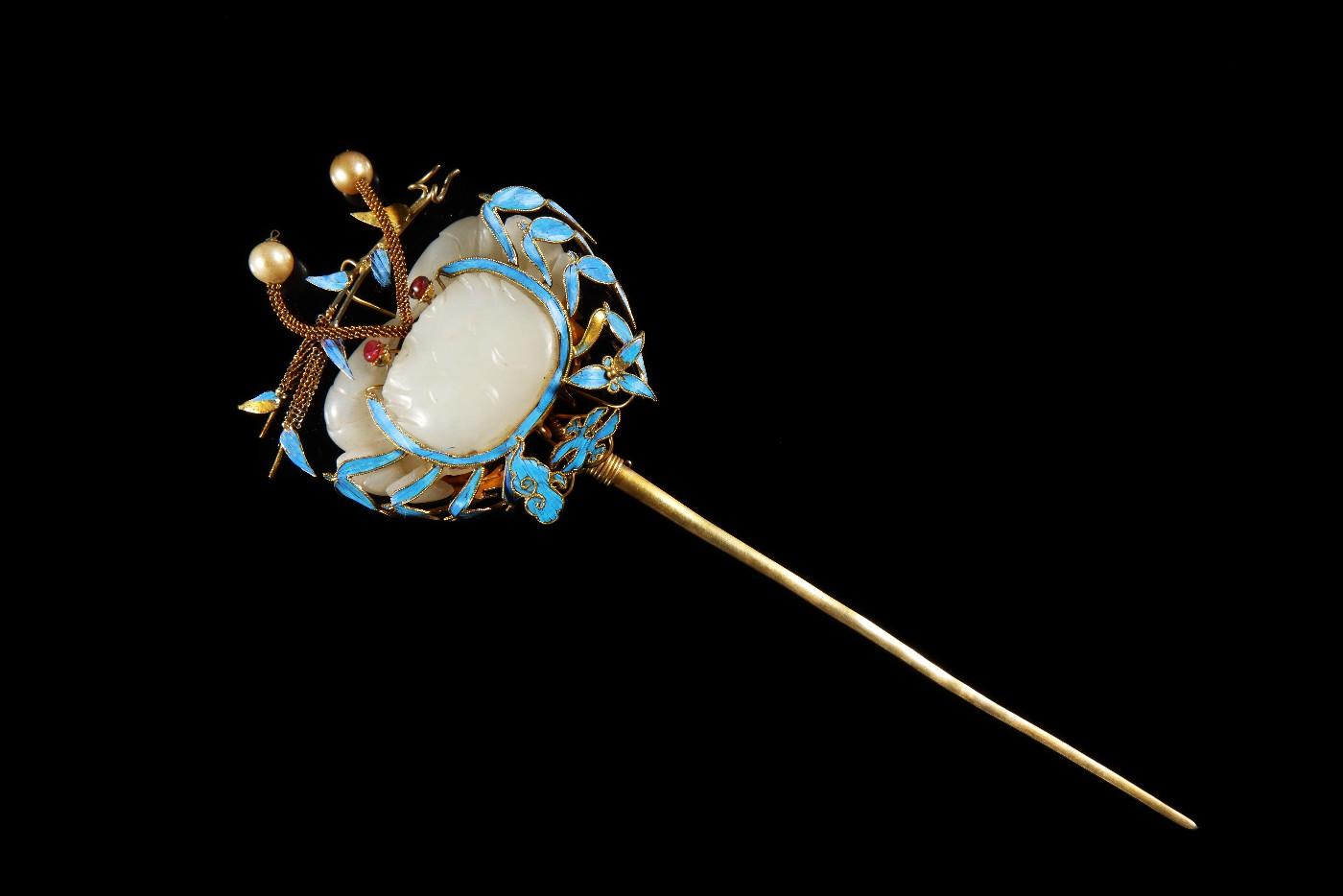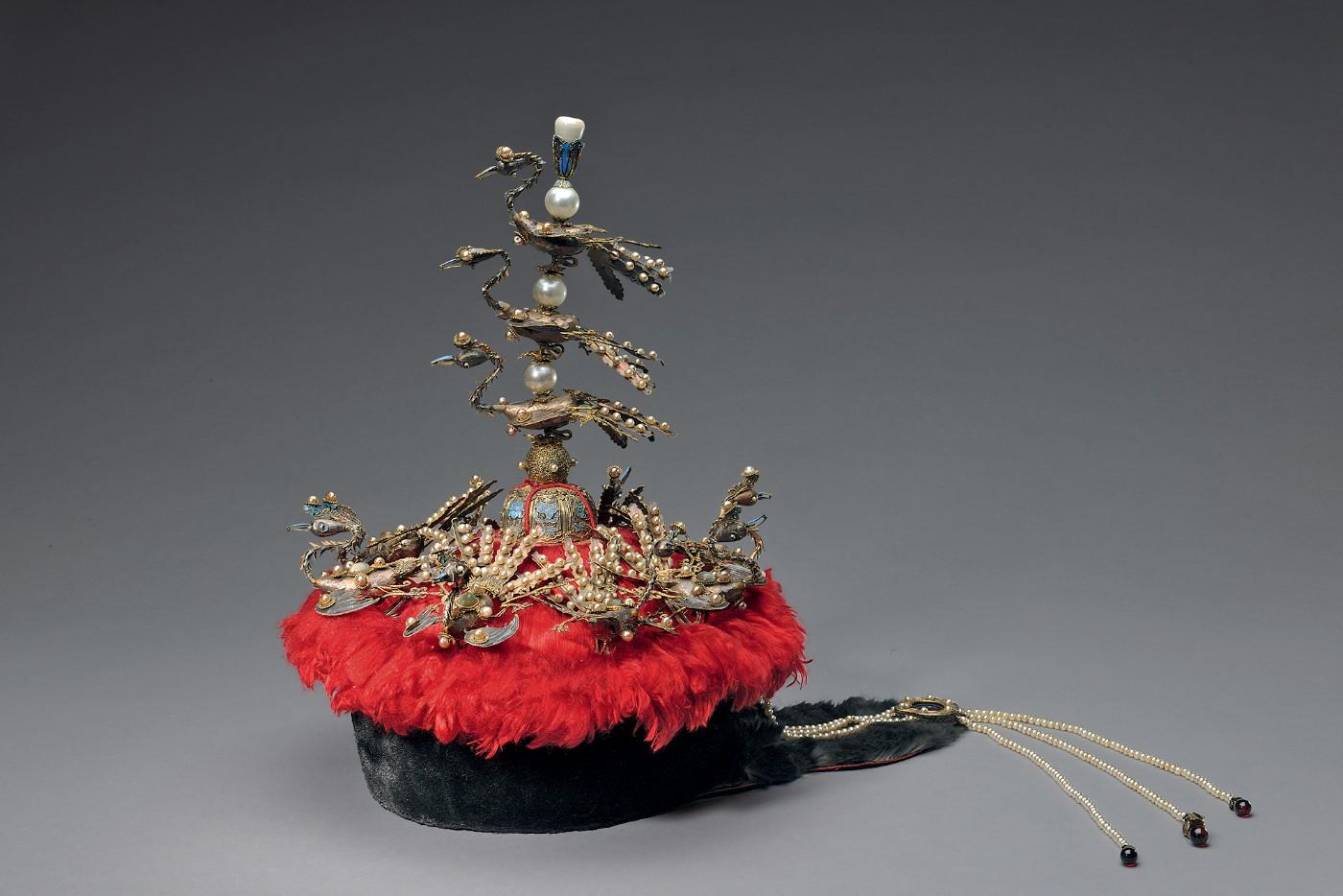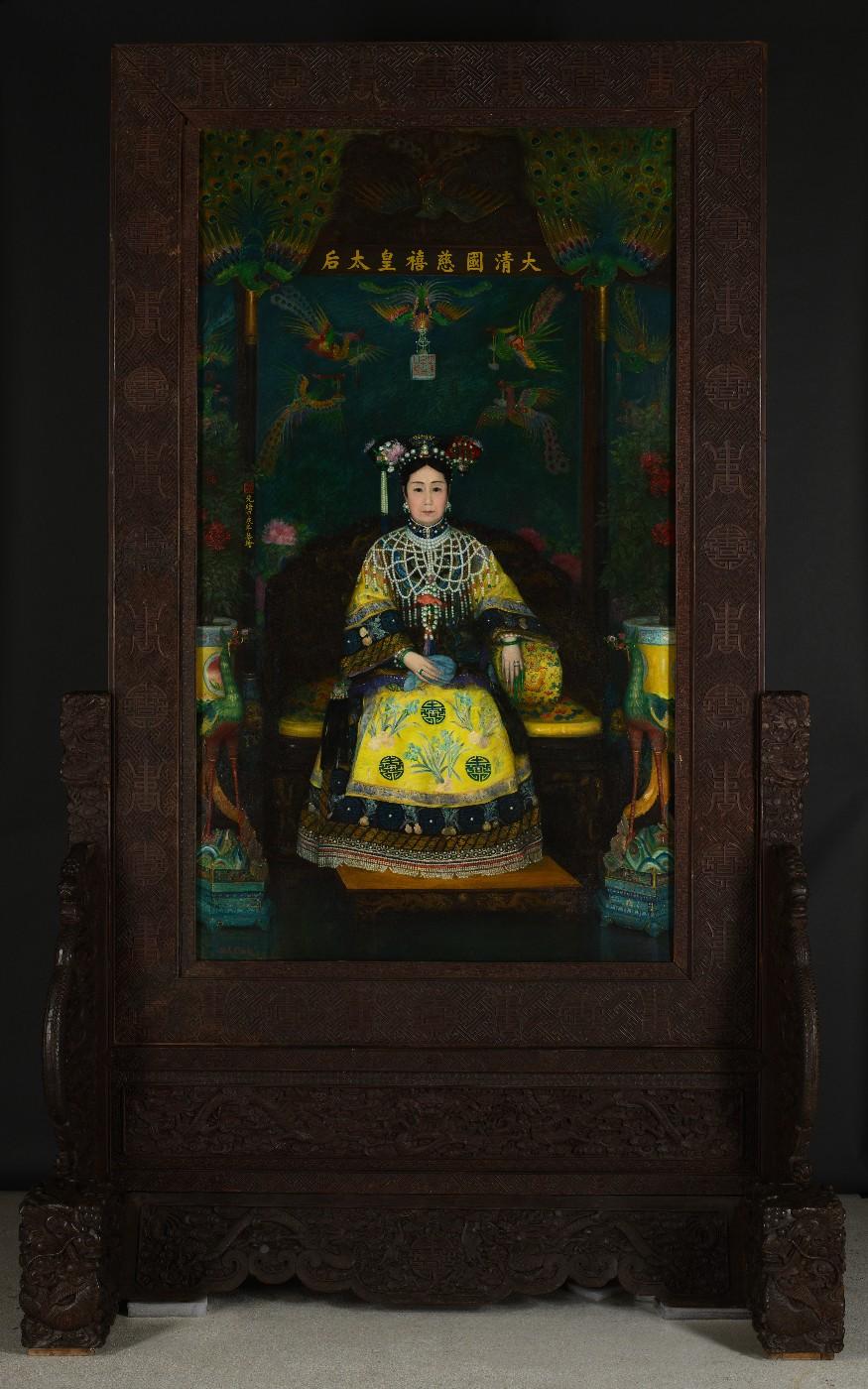Focused on three Qing dynasty (1644-1912) Empresses, the exhibition includes nearly 200 works, including imperial portraits, jewelry, garments, Buddhist sculptures, and decorative art objects, many from Beijing’s Palace Museum, which was once the Forbidden City, the Qing dynasty’s palace complex.
Exploring the lives of Empress Dowager Chongqing (1693 - 1777), Empress Xiaoxian (1712 - 1748) and Empress Dowager Cixi (1835 - 1908), Empresses of China’s Forbidden City offers a unique opportunity to experience the hidden lives of these powerful women. “We are very proud to reclaim the presence and influence of these empresses, about whom history has largely been silent,” says Daisy Yiyou Wang, PEM’s curator for this exhibition. “The exquisite objects . . . give us a better understanding of these intriguing women. Further evidence [from] historical sources help illuminate their hidden, but inspiring lives.”
The exhibition showcases the largest assemblage of imperial textiles and jewelry ever shared with the U.S. from the Palace Museum. The exquisite jewelry and adornments, stunning embroidery and opulent dragon robes were all used by the Qing dynasty Empresses to project authority.




